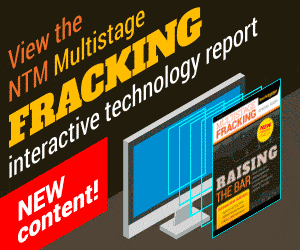GE Thermal Production Optimization – A Comprehensive System Approach
- Published: Wednesday, 16 March 2016
- Author: Daily News
Big data and the Internet can help companies make better, proactive decisions in production applications and reduce operational costs, says Warren Gieck, production optimization leader at GE Canada.
A complete digital SAGD optimization portfolio entails the integration of asset planning and operations scheduling. In turn, these rest on three pillars: well performance optimization; equipment optimization; and dynamic CPF (Central Processing Facility) modelling and optimizer, for facilities performance development.
Production forecasting and optimization in SAGD is challenging because of reservoir heterogeneity and operational changes. The solution: Develop physics-based and data-driven models to 1) reduce uncertainty and improve the production forecast for bitumen, water and gas, and 2) maximize production potential by optimization of steam allocation on a continuous basis.
The physics based models include a simulation coupled meta model and a reservoir connectivity based model. The addition of data driven models can then improve accuracy and help you understand your downtime constraints. Combination of data driven and physics based models would lead to a hybrid model that will drive highly accurate production forecasting and field level optimization.
Customers can optimize steady-state scenarios and run what-if scenarios in minutes instead of days, thanks to better tools that more accurately forecast and optimize production. This means that in the event of a steam constraint, the operator can quickly decide, for example, which are the best wells to allocate the steam to. GE works closely with customers to answer these questions.
More accurate forecasting can help reduce costs in a variety of ways, including via better supply chain management and predictive maintenance. Reducing diluent costs by two per cent could save 10 cents per barrel in production. Predictive analytics to identify production loss conditions in wells with electric submersible pumps (ESPs) could result in further savings. Also, advanced equipment analytics supported by GE software can track trending patterns of normal operations and use feedbacks to adjust operating conditions, resulting in improved equipment performance, longer operating life, reduce false alarms and reduced downtime.
In one instance, a monitoring system that included variables like motor temperature, output current and leakage current provided an operator with two weeks notice of an imminent ESP failure. In another, when a problem with a pump was identified, the pumping speed was reduced and it ran for an additional three months before failure.
In process simulation and optimization, with the support of a digital twin, it is possible to create a virtual physics- and data-driven environment to simulate an entire facility, and include the reservoir in the simulation model, all in real time, in order to optimize the decision process on the best course of action.
Assisted by real-time monitoring and calculations, a state-of-the-art virtual plant model includes high fidelity dynamic models for process equipment and unit operations in order to optimize plant operations.
This is unlike most current modelling systems that lack real time information and simulations.
A thermodynamic modelling system that's part of a digital twin provides the operator with real-time simulation and predictive analysis to maximize efficiencies around constraints like operational costs, emissions or some directives. For example, if steam quality declines because a boiler is losing its efficiency, this kind of tool, using a CPF optimization model, would help an operator evaluate the various process change options and factor in the impact on performance, cost, emissions, etc. on a case-by-case basis.
This kind of big data analytics for industrial scale field operations can be handled with a secure cloud platform like Predix. Producers can spot trends and predict events to optimize production. The platform is open and can therefore accommodate a wide range of applications.



